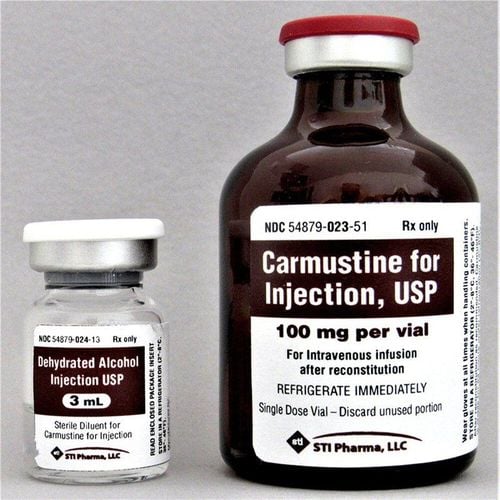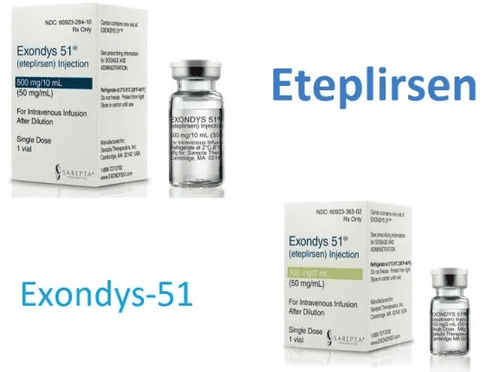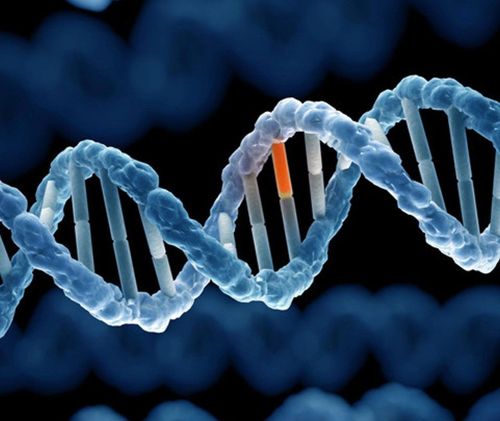This is an automatically translated article.
Article written by Dr. Do Phuoc Huy, Vinmec High Technology Center
According to the 2016 WHO Central Nervous System Tumor Classification, testing for mutations in the IDH1 and IDH2 genes is recommended for all patients with grade II-III gliomas and GBM diagnosed before age 55. The most frequent mutation of IDH1 is R132H that can be detected by immunohistochemistry (IHC). The remaining mutations of the IDH1 and IDH2 genes can be detected through DNA sequencing.
The isocitrate dehydrogenase (IDH) family of enzymes includes three isoforms located in the cytoplasm and peroxysomes (IDH1), and mitochondria (IDH2 and IDH3). These IDH enzymes are involved in a number of cellular metabolic processes including mitochondrial oxidative phosphorylation, glutamine metabolism, fat biosynthesis, and regulation of the cellular redox state. In particular, IDH1 and IDH2 both catalyze the conversion of isocitrate into alpha-ketoglutarate (αKG) and convert NADP+ into NADPH.
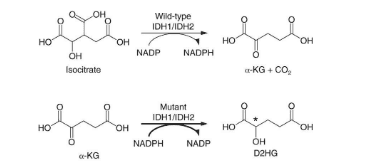
Chu trình biến đổi isocitrate thành αKG và từ αKG thành D2HG
IDH1 and IDH2 genes are located on chromosome 2 (2q33.3) and chromosome 15 (15q26.1), respectively. IDH1 and IDH2 gene mutations can be found in patients with acute myeloid leukemia as well as in gliomas and many other cancers. The majority of IDH gene group mutations appear as heterozygous on somatic cells (somatic mutations) with point mutations in the active regions of the IDH1 and IDH2 enzymes leading to a substitution of the amino acid arginine at position 132 on the gene. IDH1 and 172 or 140 on the IDH2 gene. The IDH enzyme produced by the mutated IDH1 and IDH2 genes further converts NADPH and αKG into NADP+ and D2-hydroxyglutarate (D2HG). Excess D2HG inhibits many enzymes involved in DNA methylation, resulting in changes in gene expression and cell proliferation.
IDH gene mutations in gliomas Testing for mutations in the IDH gene group is an important biomarker in the diagnosis, survival and prognosis of treatment response in patients with gliomas.
Molecular classification of gliomas is divided into gliomas with mutations in the IDH gene group (mutant-IDH) and gliomas without mutations, also known as wild-type IDH.
IDH1 and IDH2 mutations are present in nearly 80% of oligodendrogliomas and grade II and III astrocytomas, as well as secondary glioblastomas (GBMs). secondary GBM). In contrast, mutations in the IDH gene pool were found in only 6% of patients with primary GBM.
The presence of mutations in the IDH gene group in glioma patients will help distinguish the developmental origin of the tumor. For patients with gliomas with mutations in the IDH gene group, the clinical symptoms are quite typical, including appearing in young patients, often in the frontal lobe, less infiltrate and better prognosis.
The most common IDH1 gene mutation - accounting for about 90% of all IDH gene group mutations - causes an amino acid change from arginine to histidine (R132H). Besides IDH1 R132H, rarer mutations affecting the IDH1 gene at Arg132 include R132S, R132C, R132G and R132L or IDH2 at Arg172 (R172K).
Molecular biology studies of gliomas with mutations in the IDH gene group show the very early occurrence of these mutations in tumor formation and development. Other commonly seen molecular changes include co-deletion of chromosome 1 short arm and long arm 19 (1p/19q co-deletion), common CIC, FUBP, and TERT gene mutations. in oligodendroglioma group and TP53 and ATRX gene mutations in astrocytoma group.
Patients with gliomas with mutations in the IDH gene group, often accompanied by increased methylation of the promoter region of the MGMT gene, have a better response to chemotherapy drugs with alkylating agents such as temozolomide (TMZ).
IDH gene group mutations as a diagnostic biomarker. Mutations in the IDH gene group are very valuable biomarkers for the differential diagnosis of different types of gliomas. As mentioned above, mutations in the IDH gene group are mainly found in grade II, III and secondary GBM gliomas. In addition, when clinically relevant for GBM, the presence of an IDH gene mutation suggests a neuroblastoma secondary to transformation from a low-grade gliomas.
IDH gene group mutations as a biomarker in glioma survival. From the study results of Sanson as well as of Parsons, the presence of mutations in the IDH gene group is a good prognostic biomarker in patients with gliomas. In contrast, if the patient does not have a mutation in the IDH gene group, especially grade II and III, it leads to a rather poor prognosis in the patient.
IDH gene group mutation as a predictive value of treatment effectiveness in patients with glioma. The presence of mutations in the IDH gene group affects the treatment decision and the prognosis of post-treatment response. A large study by Cairncross et al showed that the median survival of the group of patients with IDH gene mutations treated with chemotherapy and radiotherapy was significantly higher than that of the group of patients with radiotherapy alone (9.4 years vs. with 5.7 years). In contrast to the group without the IDH gene group mutation, there was no difference between the two treatment options (1.3 and 1.8 years)
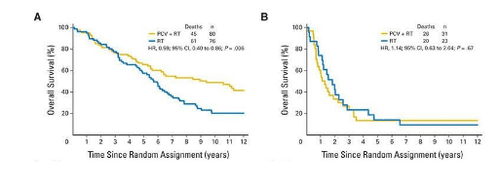
So sánh sống còn giữa nhóm có đột biến nhóm gen IDH và nhóm không có đột biến với hai phương thức điều trị. A: có đột biến nhóm gen IDH. B: không có đột biến nhóm gen IDH.
Test for IDH gene group mutations in gliomas and glioblastomas According to the 2016 WHO central nervous system tumor classification, the test to evaluate mutations of the IDH1 and IDH2 genes is Recommended for all patients with grade II-III gliomas and GBM diagnosed before age 55. The most frequent mutation of IDH1 is R132H that can be detected by immunohistochemistry (IHC). The remaining mutations of the IDH1 and IDH2 genes can be detected through DNA sequencing.
Testing for IDH1 R132H mutations by IHC is a preferred diagnostic method because of its high sensitivity and specificity and many other advantages when compared with DNA sequencing such as balance between efficiency and cost. , has high detection ability in cases where only a few tumor cells carry the mutation.
Sensitivity and specificity of IHC has been shown to be higher than that of DNA sequencing in many different studies, however, the limitation of IHC is that it can only detect the R132H mutation in the IDH1 gene. Therefore, for negative IHC results, in low-grade tissue samples or for suspected secondary GBM, IDH1 and IDH2 gene sequencing should be ordered.
There are many methods of DNA sequencing IDH gene group such as: DNA sequencing by Sanger method (undergoing at Vinmec High-Tech Center - Medical Genetics), PCR or generative sequencing new... The choice of method depends on the expertise and equipment of each laboratory as well as the preferences and knowledge of the clinician.
Vinmec International General Hospital is a high-quality medical facility in Vietnam with a team of highly qualified medical professionals, well-trained, domestic and foreign, and experienced.
A system of modern and advanced medical equipment, possessing many of the best machines in the world, helping to detect many difficult and dangerous diseases in a short time, supporting the diagnosis and treatment of doctors the most effective. The hospital space is designed according to 5-star hotel standards, giving patients comfort, friendliness and peace of mind.
Please dial HOTLINE for more information or register for an appointment HERE. Download MyVinmec app to make appointments faster and to manage your bookings easily.







